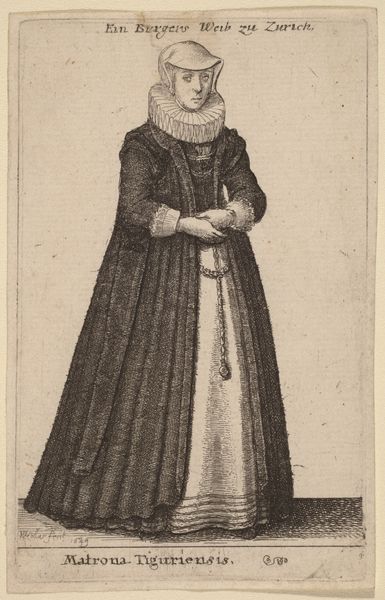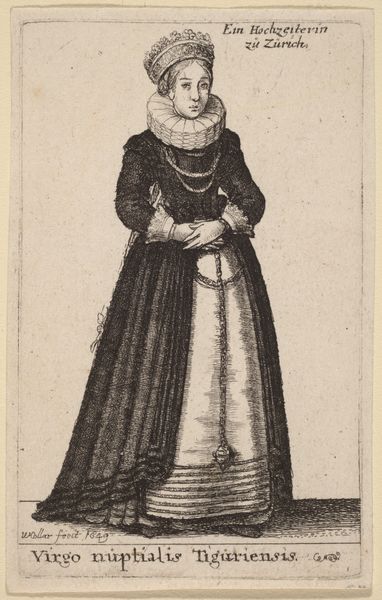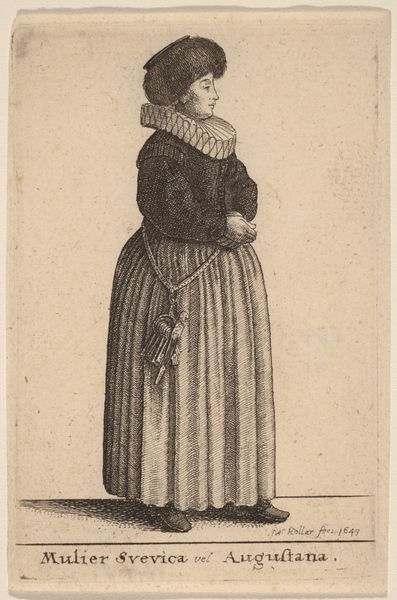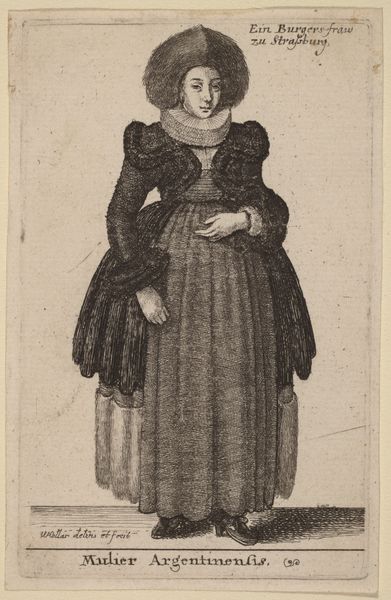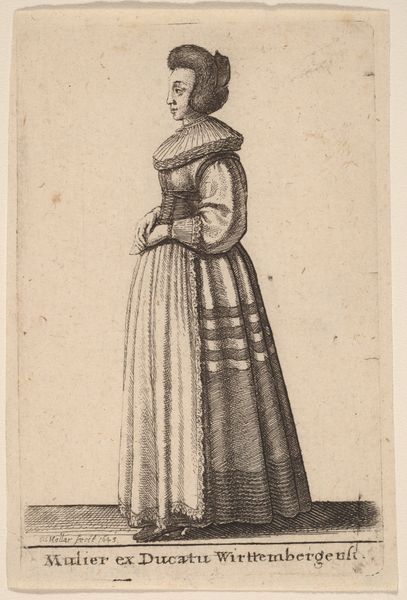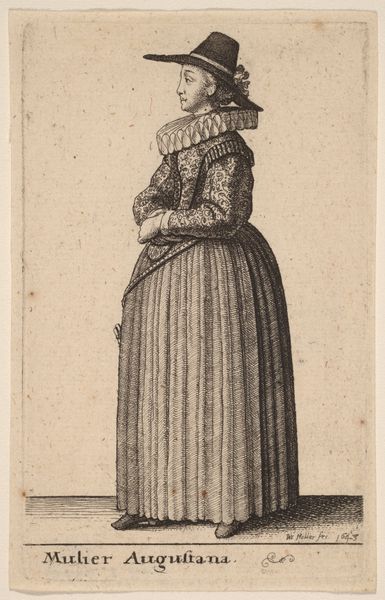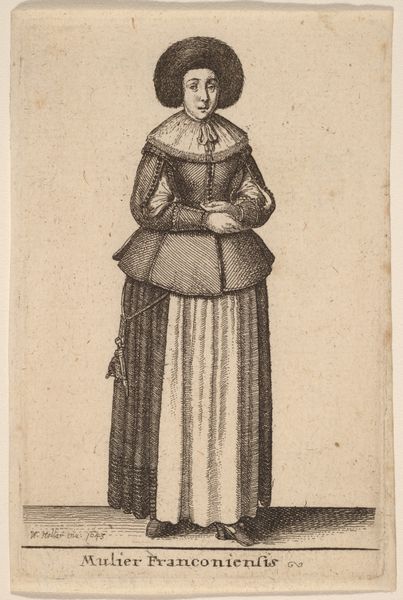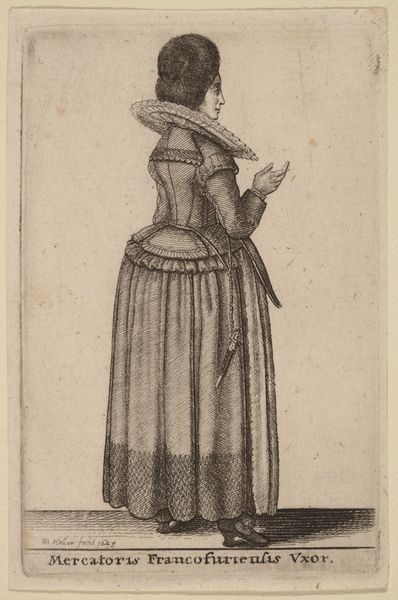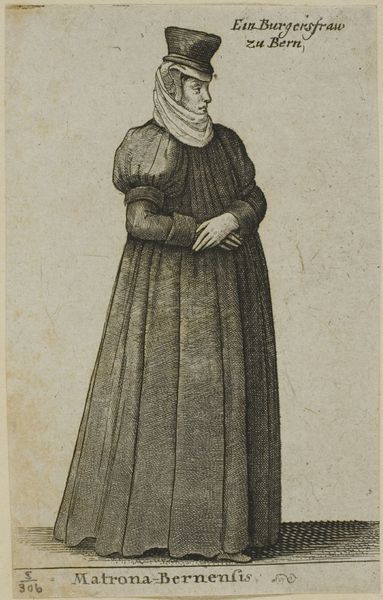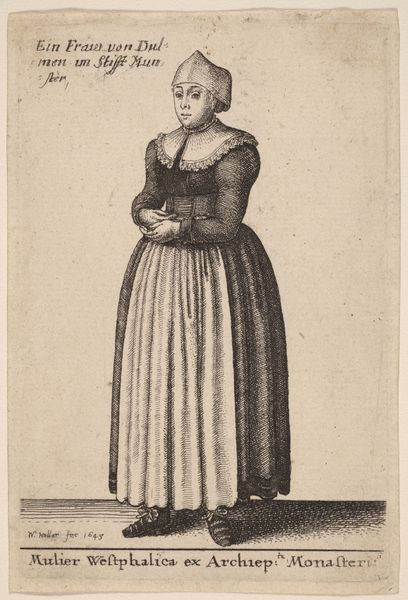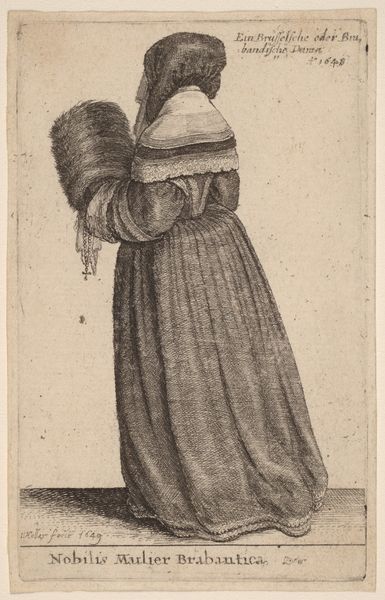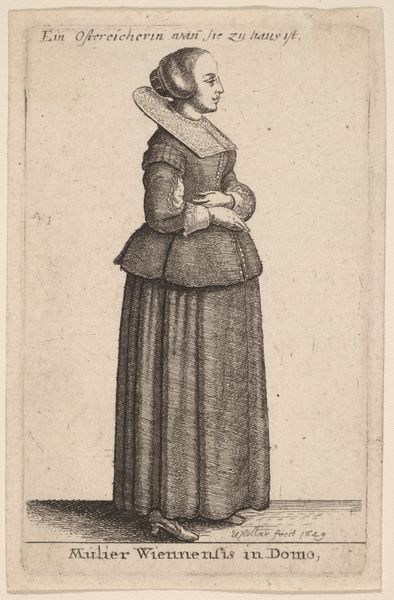
print, engraving
#
portrait
#
baroque
# print
#
genre-painting
#
engraving
Copyright: National Gallery of Art: CC0 1.0
Editor: This is "Mulier Bernensis," a 1649 engraving by Wenceslaus Hollar. It depicts a woman in distinctive Bernese attire. I’m immediately drawn to the intricate details of her clothing and the textures Hollar manages to create with just lines. What stands out to you about this work? Curator: What strikes me is the labor invested in producing and consuming such garments. This engraving, through its precise depiction of fabric and construction, provides insight into the material culture of the period. Consider the ruff—the hours of skilled work required to create and maintain its crisp pleats. Editor: So you're seeing it as a kind of document of labor? Curator: Precisely! And also as a document of consumption. The woman's garments likely signify a certain social standing achieved through access to resources and specialized craftsmanship. This print, then, invites us to consider not just the artistry of Hollar, but also the broader economic and social systems in which this "Mulier Bernensis" exists. What can this image tell us about production? How are we implicated in what we acquire, wear and represent? Editor: That makes me think about how the engraving itself would have been produced and distributed – the labor of the artist, the materials used, and the eventual consumption of the print by collectors. Curator: Exactly. This is a portrait, but it is one that also allows for a conversation about materials, process and labour of both the portrayed sitter and the print’s creation. The relationship between craft and art challenges those conventional art historical distinctions and reveals the means of social construction and artistic expression. Editor: It's fascinating to consider the artwork as a product of so many layers of labor and material choices. I had never quite considered prints in this way before! Curator: By considering process and materials, our interpretation moves beyond a focus solely on aesthetics or individual genius and addresses broader questions regarding production, consumption, and social representation.
Comments
No comments
Be the first to comment and join the conversation on the ultimate creative platform.
